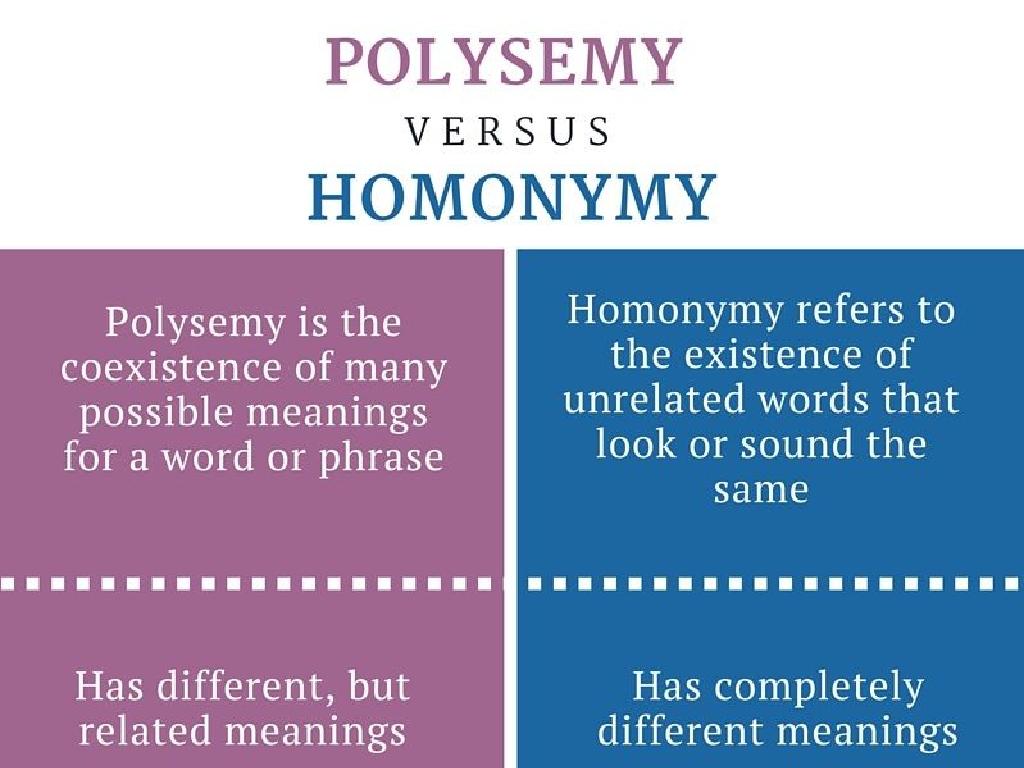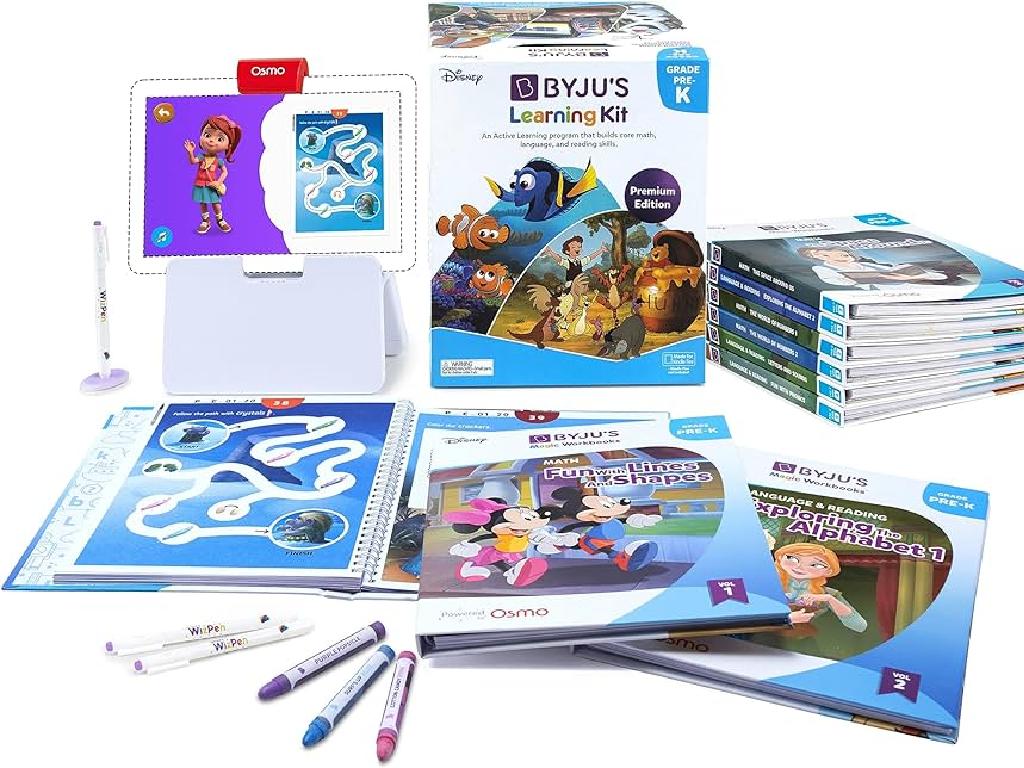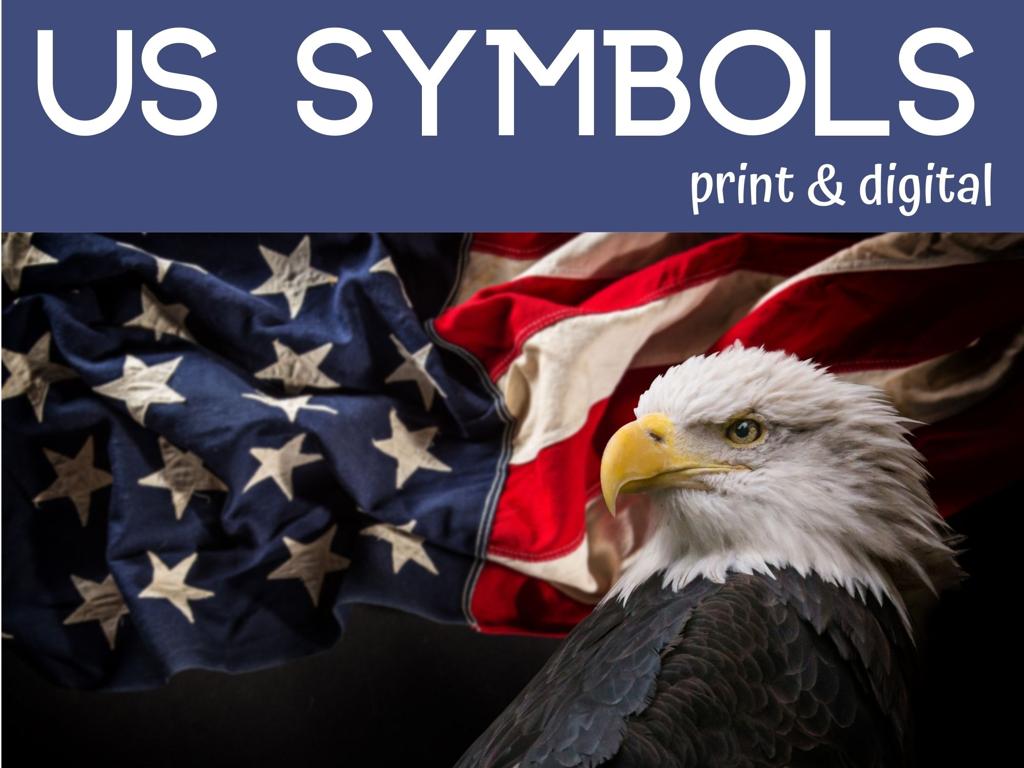Order Alphabetically Based On The First Three Letters
Subject: Language arts
Grade: Third grade
Topic: Reference Skills
Please LOG IN to download the presentation. Access is available to registered users only.
View More Content
Welcome to Alphabetical Order!
– Learning to order words alphabetically
– Sorting words helps find info fast
– What does ‘alphabetical order’ mean?
– It’s like arranging words by ABCs
– Practice makes perfect
– We’ll do fun activities to learn!
|
This slide introduces the concept of alphabetical order to third-grade students. Begin by explaining that knowing how to arrange words in alphabetical order is a key skill for finding information, whether in a dictionary, a phone book, or a list. Ask the class what they think ‘alphabetical order’ means to gauge their prior knowledge. Explain that it’s the way we sort words based on the order of the letters in the alphabet. Emphasize that with practice, they will become quick at finding and organizing words alphabetically. Plan to follow up with engaging activities where students can practice this skill, such as alphabetizing a list of their favorite animals, foods, or names of their classmates.
Mastering Alphabetical Order
– What is alphabetical order?
– Sorting words using the alphabet, like ABC
– Alphabetical order in daily life
– Like words in a dictionary or names in a phone book
– How to sort words alphabetically
– Start with the first letter, then second, then third
– Practice with examples
– Let’s sort ‘cat’, ‘car’, ‘can’ together
|
This slide introduces the concept of alphabetical order, which is a fundamental skill in reference and organization of information. Explain that alphabetical order is a system of sorting words based on the order of the letters in the alphabet. Provide relatable examples such as finding a word in a dictionary or a name in a phone book to illustrate the use of alphabetical order in everyday life. Teach students to compare letters from left to right, starting with the first letter of each word. Use simple, common words to practice sorting alphabetically as a class. Encourage students to think of other places where they have seen alphabetical order in use, such as in a classroom library or a music playlist.
Alphabetical Order: Starting with the First Letter
– Learn to sort by the first letter
– ‘A’ words come before ‘B’ words
– Continue sorting up to ‘Z’
– Example: ‘Apple’ before ‘Banana’
– Words are like a line, ‘A’ is first in line, then ‘B’, and so on.
|
This slide introduces students to the concept of alphabetical order by focusing on the first letter of words. Begin by explaining that just like numbers have an order, letters do too. Use examples that are familiar to the students, such as fruits or common objects, to illustrate the concept. ‘Apple’ starts with ‘A’ and ‘Banana’ starts with ‘B’, so ‘Apple’ comes first. Have the students practice by sorting a list of words that you provide. Encourage them to think of other words and where they might fit in an alphabetically ordered list. This activity will help build their reference skills and prepare them for more complex alphabetical ordering tasks.
Alphabetical Order: Second Letter Sorting
– Sort by second letter
– When first letters are the same, second letters decide the order.
– ‘Car’ vs. ‘Cat’
– In ‘Car’ and ‘Cat’, ‘a’ is before ‘r’, so ‘Car’ comes first.
– Practice with examples
– We’ll sort words together to learn this rule.
|
This slide introduces students to the concept of sorting words alphabetically by the second letter when the first letters are the same. Start by explaining that sometimes, many words begin with the same letter and we need to look at the next letter to sort them. Use ‘Car’ and ‘Cat’ as a clear example to illustrate this point. Then, engage the class with a hands-on activity where they practice sorting a list of words that start with the same letter. This will help reinforce the concept and ensure they understand how to apply this rule. Encourage students to ask questions and provide guidance as needed.
Alphabetical Order: Sorting by the Third Letter
– Sort words by the third letter
– Same first and second letters
When the first two letters are identical, the third letter determines the order.
– ‘Hat’ before ‘Ham’: ‘t’ vs. ‘m’
In ‘Hat’ and ‘Ham’, the third letter ‘t’ comes before ‘m’ in the alphabet.
– Your turn to practice!
|
This slide introduces the concept of sorting words alphabetically by the third letter when the first two letters are the same. Use the example provided (‘Hat’ vs. ‘Ham’) to illustrate how the third letter determines the order. Encourage students to think of other words that start with the same two letters and ask them to practice arranging these words in alphabetical order based on the third letter. This activity will help reinforce their understanding of alphabetical order and how to use it as a reference skill. Provide additional examples if needed and ensure that each student has a chance to try this activity with guidance.
Let’s Practice Alphabetical Order!
– I’ll give you a list of words
– Sort them by the first three letters
– Look at letters one by one: first, second, then third
– Work with your partner on this task
– Cooperation makes it fun and helps learning
– Check if you both agree on the order
– Comparing answers helps you learn from each other
|
This slide is designed to engage students in a collaborative activity that reinforces their understanding of alphabetical order. Provide a list of words to the class, and instruct them to focus on the first three letters to determine the correct sequence. Encourage them to work closely with a partner to foster teamwork and communication skills. After sorting the words, they should compare their lists to see if they match. This exercise will help them practice reference skills and ensure they understand how to order words alphabetically. As a teacher, circulate around the room to assist pairs who may struggle and to confirm the accuracy of the sorted lists. Offer praise for teamwork and correct ordering.
Class Activity: Alphabetical Order Challenge
– Get into groups for a sorting game
– Each group gets a set of word cards
– Arrange cards in alphabetical order
– Use the first three letters to decide order
– Compete to finish first!
– Fastest group wins a prize!
|
This activity is designed to help students understand and practice the concept of alphabetical order, which is a fundamental reference skill in language arts. Divide the class into small groups and provide each group with a set of word cards. The challenge for the students is to arrange these cards in alphabetical order based on the first three letters of each word as quickly as possible. This will not only make learning fun but also encourage teamwork and quick thinking. As a teacher, you can walk around to assist and ensure that students are correctly applying the alphabetical order rule. After the activity, discuss any difficulties faced and how they overcame them. Consider rewarding the fastest group to motivate participation.
Review and Reflect: Alphabetical Order
– Recap of alphabetical order
We learned how to arrange words by the first three letters.
– Importance of alphabetical skills
It helps us find words in a dictionary or names in a list quickly.
– Alphabetical sorting in real life
Libraries, bookstores, and even our classroom bookshelf!
– Engage with examples
|
This slide aims to consolidate the day’s learning about alphabetical order. Start by asking students to summarize what they’ve learned about arranging words based on the first three letters. Discuss why this skill is crucial for looking up information efficiently, such as in dictionaries, indexes, or directories. Encourage them to think of and share examples from everyday life where alphabetical order is used, like in libraries or when using apps with lists of names. This reflection helps students connect the lesson to practical uses and reinforces the importance of the skill in their daily lives.
Homework: Alphabetical Order Practice
– Sort a list of words alphabetically
– Focus on the first three letters
– For example, ‘ant’ comes before ‘ape’
– Bring your sorted list to class
– We’ll review the lists together
|
This homework assignment is designed to reinforce the students’ understanding of alphabetical order, which is a fundamental reference skill in Language Arts. Provide a list of words to the students, ensuring that they are appropriate for their reading level. Remind them to look at the first three letters of each word to determine its position in the list. This exercise will help them with dictionary skills and organizing information. In the next class, review the sorted lists as a group to allow students to learn from each other and discuss any challenges they faced.


/american_world_power_events.jpg)



